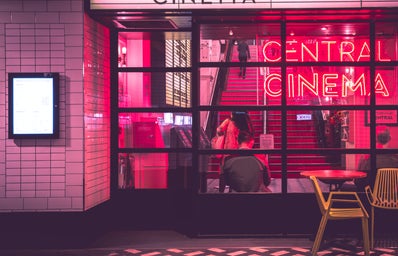In 1967, music fans and romantics alike were awed by the wedding of the glamorous and ostensibly companionable Elvis and Priscilla Presley. In photographs, the two appear deeply in love, their glittery attire both quaint and elegantly tacky in the most dazzling ways possible. Elvis, handsome and assured in his pompadour and black paisley suit, and Priscilla, with her soft yet dramatically lined eyes and pearl-sleeved gown, smile like a pair of black-haired Barbie dolls. They seem to possess a passionate sort of magnetism that can only be attributed to a romance amplified by the conviction of celebrity.
But these pictures don’t quite encompass the reality of the life they shared. The Presley marriage, as we now know, was equally imperfect as it was outwardly beautiful, with many of its more tumultuous truths obscured by fame and its starry-eyed glossiness. Over fifty years later, Sofia Coppola decided to adapt these truths to a broader medium, emphasizing the girl who first met the once grief-stricken, homesick king of rock and roll around the height of his fame when she was still a reserved teenager on a military base in Germany.
Priscilla, a biopic of Priscilla Presley’s candid and reflective memoir Elvis and Me, chronicles the relationship between the two from their first encounter at a party in 1959 to her eventual leaving of Graceland in 1973. Unlike previous films surrounding the legacy of The King, including Baz Luhrmann’s Elvis released in 2022, Priscilla is unique in the sense that it focuses solely on its titular figure’s perspective.
The film raises interesting questions of intimacy vs. closeness, as well as the possibility of their mutual exclusivity through the lens of the Presley relationship. As viewers of Priscilla, we are invited observers as much as we are voyeurs, with much of the film taking place in enclosed, domestic spaces such as Graceland’s living areas or the lavish bedroom shared and frequently occupied by the famed couple. However, even though we are granted the opportunity to see what literally goes on “behind closed doors” in these moments, we are not provided with an explicit or wholesale explanation of every connective tissue. Rather, we see snapshots — actual ones at times — of the pieces that characterize the times they spent together, as well as the loneliness left behind at times despite Elvis’ presence or absence.
These moments are tender, curious, sensual, and messy all at once, but not a tell-all. Whether we are watching the couple as they share hallucinogens, capture racy pictures of one another in bed, or playfully yet wordlessly tease each other at a poolside party, they feel real, but not representative of an explicit interiority. We never really get a direct answer of what is going on inside or exactly how they feel about each other in many of these mosaic montages, but we don’t necessarily need to. Cailee Spaeny and Jacob Elordi bring life to these seemingly larger-than-life figures.
At times, Priscilla herself is enigmatic in the sense that we are often deprived of her inner thoughts. However, Coppola is deliberate in ensuring that this passivity of perspective is not mistaken for inaction. Her cinematographic choices are careful and rely on aesthetic detail so that we as viewers can bear witness to the gradual changes that occur within her.
This is observable especially through color, with Priscilla’s teenage bedroom decorated in quieter, more innocent pinks and browns, contrasted with the darker, more mature blues and blacks of the bedroom she shares with Elvis in Graceland. Priscilla herself dresses at first in similarly colored soft sweaters and dainty heart-shaped chokers as opposed to the boldly thick flowered headbands and blocky dresses that emerge during her marriage. The transition of her hair from its natural light red to its emphatic jet black beehive, per Elvis’ request, and finally back to its original state, is also reflective of the arc that Priscilla undergoes throughout the film, as well as much of the control that their relationship had over her own appearance.
Coppola was unable to obtain the rights to Elvis’ songs for the film, and admittedly, it would have been interesting to see how some of the subtleties in his lyricism might have extended Priscilla’s thematic elements. For example, if you listen to his songs like “Stuck on You” and “His Latest Flame,” you will notice that they directly reference women with “long black hair” as recipients of his desire and affection.
However, the film’s omission of many of these well-known tunes feels intentional and effective regarding the choices that did make the cut. Some of these songs are anachronistic, such as The Ramones’ 1979 cover of “Baby, I Love You” which plays during the opening titles as an almost rebellious take on the plasticity of manufactured ideas of romance (what could be more subversive than a punk band singing maudlin love ballads?). Or even “Crimson and Clover” by Tommy James and the Shondells, a single not released until 1968, the year after the Presley wedding took place. The song’s gentle crooning of “now I don’t hardly know her / but I think I could love her” in distorted sighs after the night of Priscilla and Elvis’ first introduction serves as a sort of dreamy foreshadowing.
Without giving away too much, the film’s ending culminates in a way that, while arguably abrupt, feels compulsory to the narrative in finding a final grounding, definitely leaving an emotional pensiveness for viewers as the credits begin to roll. If you are a fan of music history and the untold realities of “glamorous” love stories through the lens of feminine sensibility, then you, too, just might find yourself struck by the cinematic resonance of Priscilla.
Priscilla is now showing in theaters everywhere.
Want to see more HCFSU? Be sure to like us on Facebook and follow us on Instagram, Twitter, TikTok, and Pinterest!


